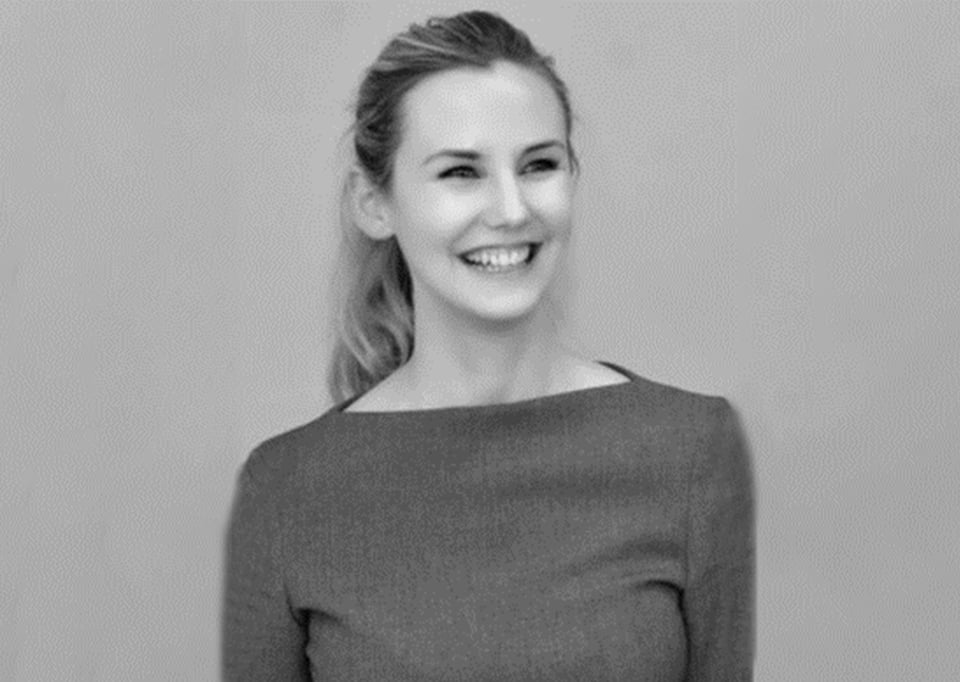We spoke to Martina Schroder, VP of Marketing and Communications at AEVI, to discover her biggest challenges on the path to success, what it's like as a working mother during a global pandemic, and finally, her top tips for creating a memorable marketing campaign.
Fintech Unicorns and Jumping Cold Water

Hi Martina! First up, could you tell us a little more about your role at AEVI?
I’m heading up marketing and communications. My main role is to develop and execute a unified marketing and communications strategy to support AEVI growth plans through clear and consistent positioning, brand equity and multichannel campaigns, globally. So I’m involved in a broad range of marketing comms from events, to PR, to account based marketing. We’re a team of seven but growing quickly. I’ve been with AEVI almost seven years now but time flies! It really doesn’t feel like seven years at all.
And for anyone who doesn’t know, what does AEVI do?
AEVI digitalises the in-person payment world. Our core product is an open cloud payment platform. Merchant-facing businesses such as merchant banks and acquirers can easily connect and upgrade their existing proposition to own their payment infrastructure, by having everything in one place. That way they can easily integrate new payment solutions and new partners, meaning they can scale their business and make it future-proof. We really think that today's product is not just about building something standalone, it’s about a collaborative approach that provides services for whatever comes next in our ever-evolving world.
So how did you end up at AEVI?
I started my professional career in a completely different world, which was not fintech but fashion! For four years I was in fashion management as a product manager. I think this actually helped me to understand retail, which is super useful for my job with AEVI – enabling merchant-facing businesses with solutions for their merchants. Working in fashion helped me understand AEVI’s customers’ customers.
Going from fashion to payments must have been a huge challenge!
After 10 years in payments I think the biggest difficulty was the complex, never ending story of payments. I was joining the payments industry for the first time with only my consumer perspective, I had no clue how complex the back-end really is. To be honest, fashion was easy. But in the payment world I had to understand this massive ecosystem of different players, barriers, and regional requirements. It’s crazy! It really was. And that space, it just exploded. People started to use cashless alternatives, Apple came up with their wallets, phones turned into payment devices. The payment world suddenly woke up, like a sleeping beauty of thirty years, and suddenly I really saw the challenge of understanding the new and the old at the same time. That was really a lot!
What was your biggest challenge during those early days?
The biggest thing was driving the carve out process from our parent company. Establishing a new company in the market, it was like, how do you say in English? Jumping cold waters? We already had a good reputation in the market as we served global clients as a business unit of our mother company. It was a very exciting experience to launch the business under a new brand. Internal comms was my biggest learning curve. When it comes to big things like communicating the mission statement and the company goals, there are different layers you need to address. It always starts with management, and then it filters down. We came up with a structure for communication to address and educate all the different layers, like a kind of internal ambassador programme. That way people could ask questions and they could feel comfortable, they got all the answers in one place. Of course, you also need to consider multicultural differences and hierarchies – how people expect communication. It's important to get internal comms right first. Your people are not only your biggest assets but also your biggest brand ambassadors.
You said you’ve been with AEVI for seven years. How much has the company changed since you started?
A lot! And the changes have been massive. That’s also the reason why I’ve been with AEVI so for a long time, because it's never been the same. It’s not like they hired me for something and I still do the same thing with the same responsibilities. We are growing so quickly, and so do the people, the roles are changing all the time. You have more responsibility. You can add more things to your agenda that you’ve never been able to cover before. It makes it super exciting! When I started out, it was just me writing the newsletters by myself, putting the content together, doing the HTML email and sending it out. But now we’ve got a proper team that thinks about the audience, the content, the copywriting, and tracks the performance of the newsletter. Seven years ago, that was far far away! If you start a new business, you have to bring a good level of hands-on mentality to the table. We were really a start-up, but we quickly started to professionalise marketing operations. That’s been a big driver for change.
What’s been the secret to maintaining AEVI’s success?
We pick the people that believe in our vision, the people that want to be part of the journey, not the people that are only looking for a new job. We have a really defined ‘AEVI person’, like you would with customer audiences. We make sure people fit our values, culture, and mindset. That’s what really drives success, choosing the right people, that’s where it starts. Once you have the right people on board your customers will feel that positive vibe too. Customer happiness is really important, especially in our business. We don’t have a product where you talk to a potential lead and sign a contract after a week or two. It takes time, it takes up to nine months. You have quite a few conversations, you need to address your audience through different channel formats. Lead nurturing plays a big role. Listening to the needs of both prospects and existing clients and providing the information and answers they need to build trust, increase brand awareness, and maintain a good connection during the purchasing process. Also, even though we are growing and professionalising, we still keep the kind of start-up mentality, its agility and flexibility. I think that’s what also drives success as we are able to respond to customer needs quickly.
You’re based in Germany, but you’re in charge of a global team and on top of that you’re a working mum. How do you manage your work-life balance?
I don’t know if I do quite manage it (laughs)! I’m still exploring a little bit, finding the right way. I feel more productive in a home office and I’ve established a routine for myself, my family and also my team. We are getting used to this kind of hybrid situation. People enjoy it. Obviously though, it makes a huge difference when you see each other. We’ve got two new hires in the UK office I talk to daily, but when you see each other and you have a drink that’s the difference. You don’t talk business, you talk life, you get to know each other better than via Teams. I try to do this more often, travelling to the UK at least once a month or letting them come over to Germany. Being a working mother, to combine my professional life with my family life, I have to stay flexible. AEVI has been very supportive in that regard. When I take hours out in the afternoon to spend with my child, I can catch up with two hours in the evening when he's in bed. It provides me a lot of flexibility and it makes me happy.
That’s good to hear! You’ve enjoyed the change and growth at AEVI, so what are your ambitions for the future?
That’s easy. I hope that the dream we had when we created AEVI will come true finally, in a few years, with even more investors supporting us, giving us the bandwidth to grow our teams and to reach even more clients to support their journey of digitalising in-person payments and to become maybe, hopefully, the next unicorn in that fintech space. That is my dream. I would love to support AEVI on that journey, from beginning as a start-up, the concept phase, to growing into a unicorn phase. This would be really really cool.
Finally, whilst we’ve still got you, what are your top tips for creating a memorable marketing campaign?
I'm a big believer in humour. At the end we all are people. Once you have a campaign that is not boring but makes people smile, I think that’s a good campaign. But you can’t gear all your campaigns as super funny. There are of course different campaigns and purposes. Thought leadership serves a different purpose to a LinkedIn talent acquisition campaign. Less is more. I like campaigns where they start with a really good ad, less words but really powerful imagery. It triggers the interest to click the button for more information instead of going into big heavy assets straight away. What’s important is understanding the audience, this is where we all have to improve and learn. I don't know if there ever will be a moment where we understand our audience a hundred percent, since customer expectations are individual perspectives, but this is the most critical bit.
Thanks so much for your time and insights Martina, it’s been great talking to you!
Thanks very much! Have a good rest of the day.




